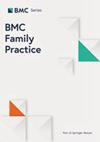猪流感大流行对芬兰全科医生就诊的影响:性别和年龄差异
IF 3.2
3区 医学
Q1 MEDICINE, GENERAL & INTERNAL
引用次数: 0
摘要
猪流感可以作为初级医疗在大流行期间所面临挑战的范例。这项研究考察了芬兰城市万塔在猪流感大流行期间和之后全科医生(GP)就诊人数和诊断结果的变化,以及大流行后全科医生活动的恢复情况。研究还评估了可能存在的性别和年龄组差异。该研究是一项观察性回顾研究。研究记录了在猪流感大流行之前、期间和之后两年,0-19 岁、20-64 岁和 65 岁以上年龄组的男女全科医生每月接诊病人的数量。此外,还对记录的诊断结果进行了研究。调查时间为 2008 年至 2012 年。在猪流感肆虐的前六个月,女性每月到基层医疗机构就诊的人数从 12 324 人次(平均值)减少到 10 817 人次,男性则从 8563 人次减少到 7612 人次,之后又恢复到原来的水平。因此,这一下降在女性中稍显突出。然而,随着随访期间人口数量的增加,根据人口数量调整后的全科医生实际就诊次数在猪流感发生后的两年内一直处于下降水平。这种减少尤其体现在 20-64 岁男性(从 3692 人减少到 3260 人)和女性(从 6301 人减少到 5428 人)的上班时间就诊人数上。猪流感并没有改变初级保健急诊室的就诊人数。在猪流感期间,有常见传染病诊断记录的就诊比例大多有所下降。慢性病诊断记录的分布仅受到轻微影响。猪流感等大流行病可能会减少全科医生的诊疗时间。这反过来又可能导致初级保健活动在大流行后的很长一段时间内向下调整。特别是 20-64 岁年龄组的人可能会受到影响。从 COVID-19 大流行中开始恢复时应考虑到这一风险。猪流感没有影响慢性病的就诊比例,但常见传染病的诊断数量有所减少。本文章由计算机程序翻译,如有差异,请以英文原文为准。
Impact of the Swine flu pandemic on General Practitioner (GP) visits in Finland: sex and age differences
Swine flu might serve as a model for challenges that primary care faces during pandemics. This study examined changes in the numbers and diagnoses of general practitioner (GP) visits during and after the Swine flu pandemic in Vantaa, a Finnish city, and how GP activities recovered after the pandemic. Putative sex and age group differences were also evaluated. The study was an observational retrospective study. The monthly number of patient visits to primary care GPs by women and men in age groups 0–19, 20–64 and 65 + years was recorded before, during and two years after the Swine flu pandemic. The recorded diagnoses were also examined. The investigation period was from 2008 to 2012. The numbers of monthly visits to primary care decreased from 12 324 (mean) to 10 817 in women and from 8563 to 7612 in men during the first six months of the Swine flu, returning to the original level afterwards. This decrease was thus slightly more prominent in women. However, as the size of the population increased during the follow-up period, the actual number of GP visits adjusted for the size of population remained at a decreased level for two years after the Swine flu. This decrease was observed especially in office-hours visits of men (from 3692 to 3260) and women (from 6301 to 5428) of 20–64 years. Swine flu did not alter the number of visits to the primary care Emergency Department. The proportion of visits with diagnostic recordings of common infectious diseases mostly decreased during the Swine flu. Only a minor impact on the distribution of recordings of chronic diagnoses was found. A pandemic, such as Swine flu, may decrease office-hours visits to primary care GPs. This in turn may lead to activities of primary care being adjusted downward for a long time following the pandemic. Especially the age group 20–64 years may be affected. This risk should be considered when recovery from the COVID-19 pandemic begins. Swine flu did not affect the proportion of consultations of chronic diseases, but the number of diagnoses of common infectious diseases had diminished.
求助全文
通过发布文献求助,成功后即可免费获取论文全文。
去求助
来源期刊

BMC Family Practice
医学-医学:内科
CiteScore
3.20
自引率
0.00%
发文量
0
审稿时长
4-8 weeks
期刊介绍:
BMC Family Practice is an open access, peer-reviewed journal that considers articles on all aspects of primary health care research. The journal has a special focus on clinical decision making and management, continuing professional education, service utilization, needs and demand, and the organization and delivery of primary care and care in the community.
 求助内容:
求助内容: 应助结果提醒方式:
应助结果提醒方式:


